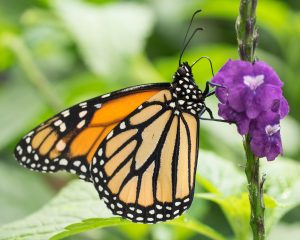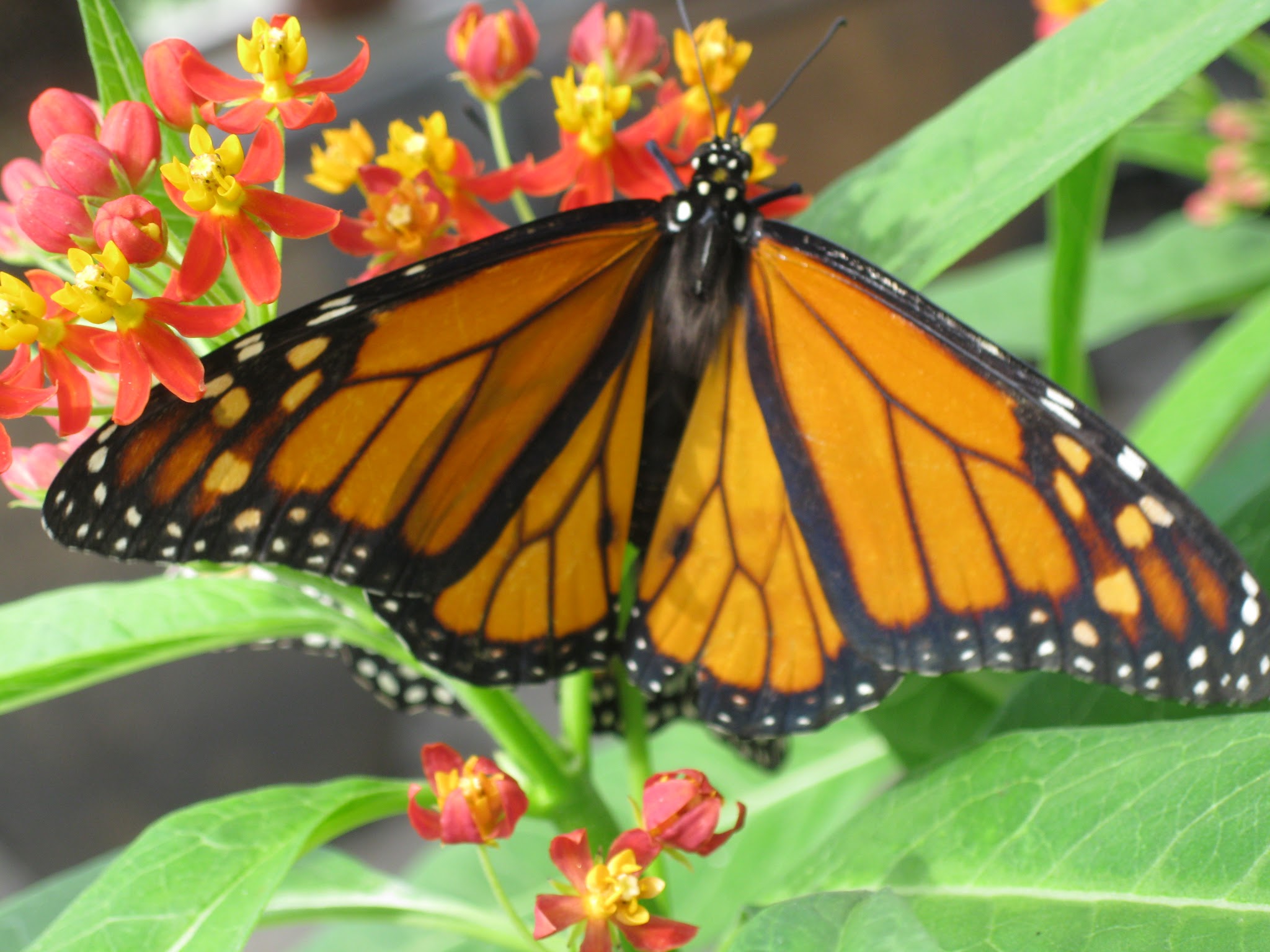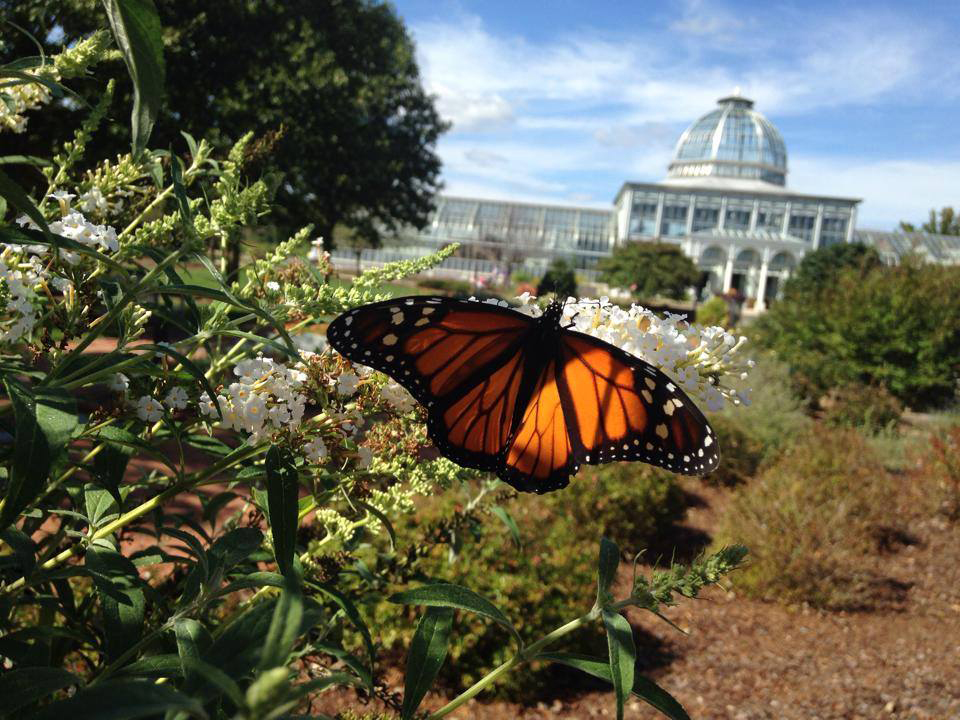Helping Monarchs by Building Habitats
Pollinators are essential for our survival because they sustain our ecosystems by helping plants reproduce. Their role is sometimes underestimated by humans who may not realize that pollinators are also responsible for every one in three bites of the food we eat. Humans are responsible for the decrease in pollinators’ habitats. So part of the solution is educating humans about their value through events like M&T Bank Pollinator Power and the Garden’s recent Pollinator Power Symposium, where I had the opportunity to learn about pollinators from esteemed academics in the field of insect biology. The presentations ranged from bumble bees to fireflies, and each was enlightening as every pollinator species has its own set of characteristics and pollination routine.
The presentation that stuck with me the most was from Dr. Jaret C. Daniels, who spoke about the world of monarch butterflies. I have loved monarchs since I was a little girl, so learning about their unique features and how humans can help them thrive was equally exciting and heartwarming. Dr. Daniels focused on Monarchs’ special features, the destruction of their habitats and population, and how we can rebuild healthy environments for them.
Specialist Herbivores
Most plants have built-in defenses that protect them from being eaten by predators. For example, though extremely beautiful, roses have thorns to keep deer, insects, and humans from harming them. This concept is ever-present in the world of monarchs as they are specialist herbivores, meaning they can override natural plant defenses and benefit from the unique traits of their host plant, milkweed (Asclepias). Most milkweed has hairy leaves that most insects dislike. Monarchs don’t mind the hairy leaves. Milkweed has a toxic white sap called Galitoxin that is poisonous to predators, humans and other animals. As the monarchs eat the milkweed as larvae, these toxic cardenolides remain in the insect and defend against predators because they too become poisonous to eat. Monarchs and milkweed work together to keep the butterfly nutritionally satisfied and chemically protected.
Habitat Destruction = Population Decline
The loss of breeding habitat is the leading cause of decline for both the western and eastern populations of monarchs. Subsequently, constant urbanization makes monarch-safe habitats hard to come by. Did we mention that milkweed is the ONLY plant that can support the life cycle of the monarch? Furthermore, if individuals want to promote biodiversity and monarch populations, the best thing we can do is work across landscapes to preserve habitats and plant for pollinators. Humans are responsible for rebuilding spaces for pollinators to thrive. We have many opportunities to expand green spaces in cities and suburban areas. We can focus on supporting pollinators and creating community spaces that bring people and pollinators together. Dr. Daniels is a big proponent of utilizing roadside space, such as intentional plantings along highways and roads that are fertile but unused. If groups come together to cultivate those spaces with native plants, monarch populations are much more likely to thrive during migration.
Promoting Natural Biodiversity in Habitats
Promoting native biodiversity is essential, and it is important to regulate our use of chemicals and rebuild resources such as gardens full of diverse, native plants. Lucky for us, fourteen milkweed species are native to Virginia and also sure to charm the monarchs. Other native species like thistle (Cirsium), goldenrod (Solidago), Joe-Pye weed (Eutrochium purpureum), pentas (Pentas lanceolata), cosmos (Cosmos bipinnatus), lantana (Lantana camara), and zinnia (Zinnia) are beautiful additions to any garden that will surely attract monarch friends for nectar. The more diversity in color and form you have in your garden, the more monarch butterflies you will accumulate, as well as diverse groups of pollinators.
Helping Monarchs with Habitats Moving Forward
I enjoyed the Pollinator Symposium and now find myself more conscious of pollinators in my everyday life than I ever was before. Dr. Daniels and the other presenters were all engaging speakers who truly cared about the information they shared. In my home garden, I will plant milkweed and stay on the lookout for monarch butterflies on their migration this fall. I will also continue to educate myself on how we can rebuild habitats for monarchs and other Pollinators so their populations can continue to flourish.


